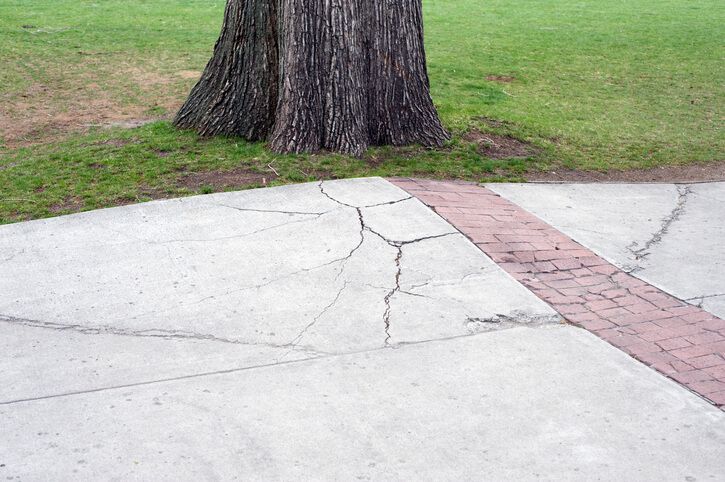Tree roots are powerful and persistent, often growing far beyond the tree’s canopy in search of water and nutrients. While they are essential for a tree’s survival, they can become a major problem when they interfere with man-made structures. Because roots grow wherever conditions allow, they can disrupt foundations, pavement, and underground utilities in ways that can be both costly and hazardous.
1. Cracks in Foundations
Tree roots don’t directly break through concrete, but they can cause significant foundation damage by displacing soil and exerting pressure on structures. This happens in two main ways:
Soil Shifting: As roots absorb moisture, they can cause the soil to expand and contract, leading to uneven settling of a home’s foundation. Over time, this movement can create cracks in the walls, floors, and even ceilings.
Physical Pressure: In some cases, large roots growing too close to a foundation can push against it, increasing stress on the structure and leading to buckling or instability.
Signs of Root-Related Foundation Damage:
✅ Cracks in interior or exterior walls
✅ Doors and windows that no longer close properly
✅ Uneven or sloping floors
✅ Gaps between walls and ceilings or floors
If left unaddressed, foundation damage can lead to costly structural repairs or, in extreme cases, make a home unsafe to live in.
2. Buckled Sidewalks and Driveways
Large surface roots often grow just below sidewalks, driveways, and patios, pushing up against the pavement as they expand. Unlike foundations, which are usually built with some reinforcement, sidewalks and driveways are often thin slabs of concrete that are easily lifted or cracked by growing roots.
Tripping Hazards: Uneven or raised pavement poses a serious risk of falls, especially for children, elderly individuals, or visitors to your property.
Vehicle Damage: A driveway with lifted or broken concrete can cause tire damage and alignment issues for cars, leading to additional repair costs.
Aesthetic Concerns: Cracked and uneven pavement can make a property look neglected, potentially lowering curb appeal and property value.
In many cases, simply grinding down raised areas or repouring sections of the sidewalk won’t solve the issue permanently—unless the problematic tree roots are addressed.
3. Plumbing Issues
Underground pipes carrying water, sewage, or irrigation systems are particularly vulnerable to tree roots, which are naturally attracted to the moisture they provide. If a pipe has even a small crack or weak joint, roots can invade, expand, and eventually cause severe blockages or ruptures.
Slow Drainage: If sinks, bathtubs, or toilets drain sluggishly, it could indicate that tree roots have infiltrated underground pipes.
Frequent Clogs or Backups: Recurring plumbing issues, especially affecting multiple drains in a home, could point to a tree root problem.
Soggy or Sunken Patches in the Yard: If a section of your lawn is unusually wet, even without rain, it might indicate a leaking underground pipe caused by root infiltration.
Foul Odors: Tree roots blocking sewer lines can cause wastewater to back up, leading to unpleasant smells inside or outside the home.
Final Thoughts
While tree roots play a vital role in supporting a tree’s health, they can also cause serious structural damage when growing too close to foundations, pavement, or underground utilities. If you notice any of the warning signs mentioned above, request a quote to help determine whether removal is necessary to prevent long-term damage and costly repairs.

